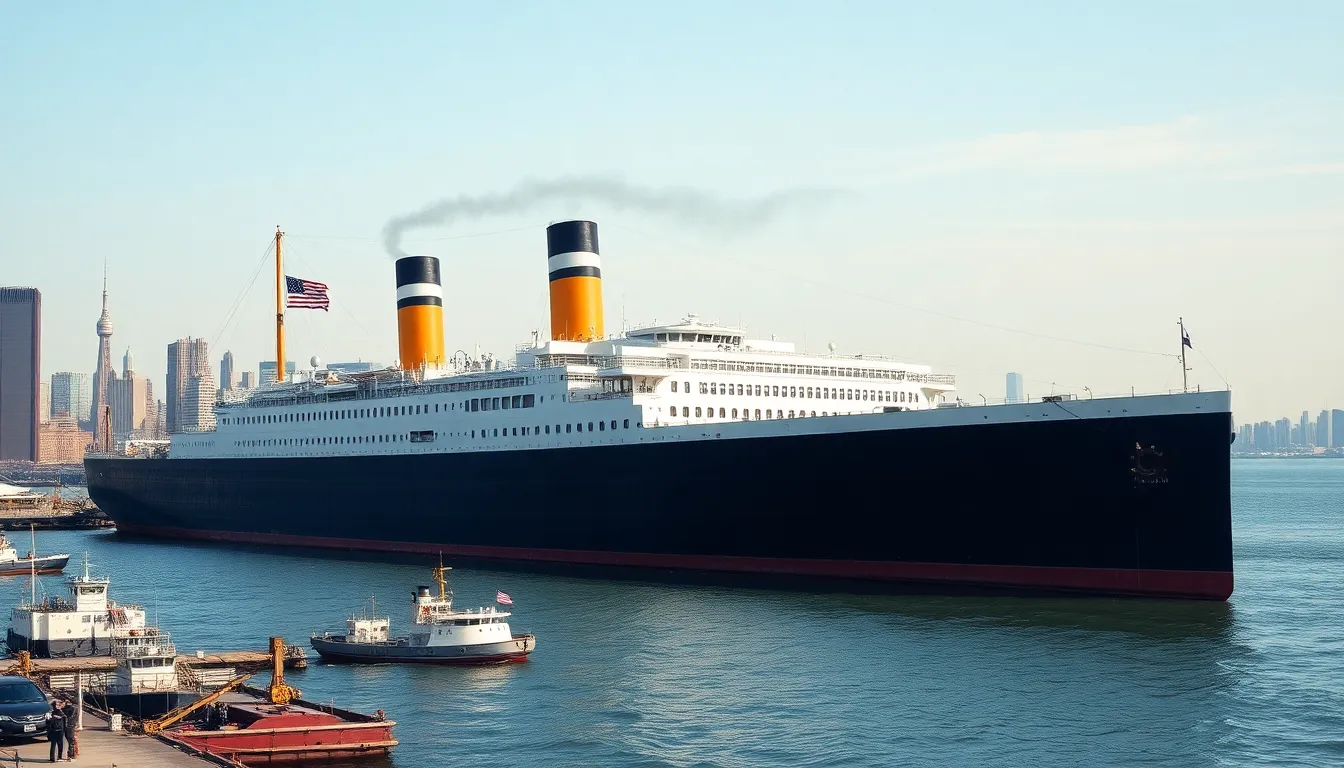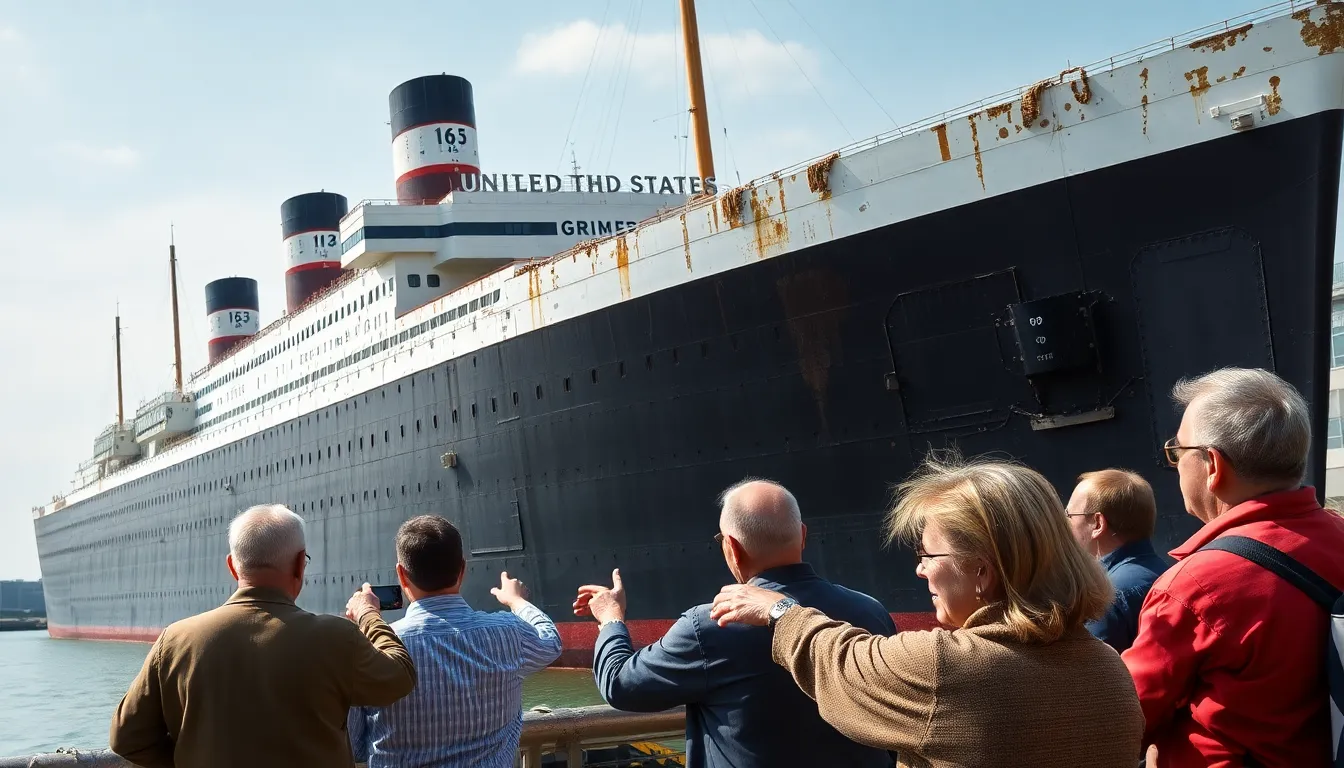Table of Contents
ToggleThe SS United States, once a symbol of luxury and speed, has captured the hearts of many with its storied past. However, recent developments have raised eyebrows as the ship’s departure has faced unexpected delays. Enthusiasts and historians alike are eager to uncover the reasons behind this postponement and what it means for the future of this iconic vessel.
As anticipation builds, the implications of the delay stretch beyond mere logistics. It reflects broader challenges in preserving maritime heritage and the complexities of restoring such a monumental ship. Understanding the factors at play not only sheds light on the SS United States but also highlights the ongoing struggle to maintain historical landmarks in today’s fast-paced world.
Overview of the SS United States
The SS United States, launched in 1952, stands as an iconic symbol of American maritime history. Known for its impressive speed, the vessel holds the record for the fastest ocean liner, crossing the Atlantic in just over three days. With a length of 1,032 feet, it represented technological advancement and luxury during its peak operation.
The ship features grand public spaces, including a stunning ballroom and elegant dining rooms, designed to offer a premium experience for passengers. The United States Lines operated the vessel until its final voyage in 1969, after which it fell into disuse.
Today, the SS United States remains docked in Philadelphia, with ongoing efforts aimed at restoring and preserving the ship. Preservationists and historians work tirelessly to address the challenges posed by aging infrastructure and funding limitations. Each delay in departure raises questions about the feasibility of renovation projects while attracting attention from enthusiasts and potential investors hoping to see the ship restored to its former glory.
Historical Context of the SS United States

The SS United States holds a significant place in maritime history, marked by its remarkable launch and operational years. Understanding its early years and historical significance reveals its lasting impact on ocean travel.
Launch and Early Years
Launched on June 28, 1952, the SS United States was celebrated for its speed and design. It became an engineering marvel with a length of 1,032 feet and a capacity for over 2,000 passengers. Designed by renowned naval architect William Francis Gibbs, the ship featured advanced technology, enabling it to cross the Atlantic Ocean in record time. Its maiden voyage took place on July 3, 1952, from New York to France, completing the journey in just under four days. This exceptional speed earned the vessel the Blue Riband, a prestigious title for the fastest transatlantic crossing.
Significance in Maritime History
The SS United States represents a pivotal advancement in cruise ship design and marine engineering. It was built during a time of fierce rivalry among transatlantic carriers, exemplifying American ingenuity and competitiveness in maritime transport. The ship’s combination of luxury and speed changed passenger expectations and set a standard for future ocean liners. It was not only a symbol of American pride but also played a vital role during the Cold War era, serving as a troop transport during crises. The vessel’s legacy remains influential today, manifesting in ongoing efforts to preserve and restore it as a testament to maritime innovation and heritage.
Factors Contributing to Delayed Departure
Multiple factors contribute to the delayed departure of the SS United States, primarily technical issues and financial challenges.
Technical Issues
Technical complications arise frequently during restoration efforts. Aging systems onboard often require extensive repairs. Electrical systems, plumbing, and structural integrity must undergo thorough inspections before any progress can proceed. Unexpected findings during these evaluations indicate a greater scope of work than initially anticipated. Repairs could involve retrofitting outdated technology with modern equivalents, complicating timelines. Ensuring safety standards compliance presents additional hurdles that impact project schedules.
Financial Challenges
Financial constraints play a significant role in the delays as well. Restoration efforts depend heavily on securing adequate funding. Limited resources restrict the ability to hire skilled labor and acquire necessary materials. Efforts to attract investors face difficulties, with potential backers wary of the costs involved in such a comprehensive project. Competing preservation initiatives can also divert funds, further complicating the financial landscape for the SS United States. This ongoing struggle for funding influences timelines and project feasibility, contributing directly to the vessel’s delayed departure.
Implications of the Delay
The delayed departure of the SS United States raises significant concerns regarding the ship’s future and the various stakeholders involved in its restoration.
Impact on Passengers
Passengers eager to experience the unique voyage on the SS United States face uncertainty due to the delay. Trip itineraries change, leading to potential cancellations and rescheduling issues. Itinerary alterations can create logistical challenges for travelers, including rearrangement of accommodations and travel plans. Financial implications arise as potential passengers weigh the costs of adjusted bookings, which may deter new interest in the voyage. Public anticipation wanes, risking diminished enthusiasm for future cruises on a ship with a storied past.
Effects on Crew and Staff
Crew and staff experience direct consequences from the delayed departure of the SS United States. Employment schedules fluctuate, leading to uncertainty regarding job security and consistent income. Crew training and preparation receive disruptions, impacting their readiness to deliver the high standard of service expected aboard the ship. Continuous delays strain morale, as committed staff face the emotional toll of ongoing waiting periods. As the technical challenges progress, crew members may require additional training to adapt to any modified operations or safety protocols, ultimately influencing the efficient management of the vessel’s anticipated journeys.
Future of the SS United States
Restoration efforts for the SS United States remain critical to its future. Upcoming decisions on funding and restoration timelines will significantly impact its condition and potential revival. Stakeholders emphasize the need for strategic marketing to attract investors who recognize the ship’s historical value and cultural significance.
Plans for the vessel include transforming it into a museum and a tourist attraction, featuring exhibits on transatlantic travel and maritime history. Engaging local communities and maritime enthusiasts through events and educational programs may generate additional support and awareness. Collaborations with nonprofit organizations focused on preservation can enhance outreach efforts and fundraising initiatives.
Challenges like aging infrastructure and fluctuating financial support continuously affect restoration timelines. Stakeholders are exploring innovative funding avenues, such as crowdfunding campaigns and sponsorship opportunities, to secure necessary resources. Expanding partnerships with educational institutions can also promote research and development projects, fostering a deeper understanding of the ship’s importance.
Public interest and media coverage surrounding the SS United States play a crucial role in its prospects. Increased visibility can attract potential visitors and investors, creating a more favorable environment for restoration. Highlighting the ship’s rich history and engineering marvel can bolster efforts to preserve this iconic vessel for future generations.
The SS United States stands at a crossroads in its storied history. Delayed departures highlight the multifaceted challenges of restoration and preservation. As stakeholders grapple with technical and financial hurdles, the ship’s future hangs in the balance.
Continued public interest and strategic partnerships will be essential in securing the resources needed for its revival. The potential transformation into a museum and tourist attraction could breathe new life into this maritime icon. With dedicated efforts and renewed focus, the SS United States may once again sail into the hearts of those eager to experience its legacy.







